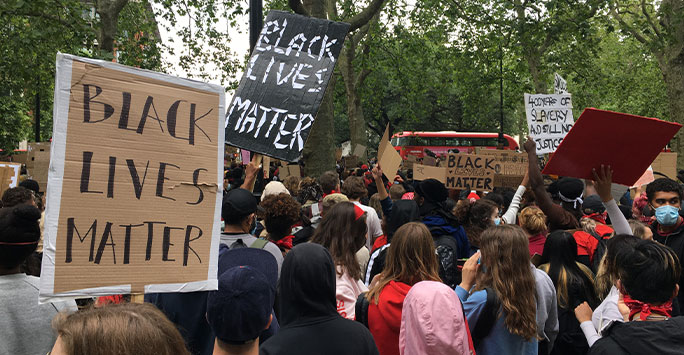
Written by Dr Jess White.
A couple of weeks ago, I attended an event where Professor Kehinde Andrews discussed his book The New Age of Empire. I’ve always admired Andrews, as he is one those scholars who is relentlessly frank about how the legacies of colonialism and slavery still play out in the twenty-first century. As the title of his book suggests, and as Andrews expanded on in his talk, racial capitalism has not ceased to exist, despite what his opponents on Good Morning Britain believe. Rather, Andrews argues that the poverty and high mortality rates that overwhelm the Global South demonstrate that Western colonialism has not disappeared, instead it is just wearing a different set of clothes.
And yet, during Black History Month, there is still a reluctance to discuss how the long shadow of colonialism still shapes the present. In particular, the legacies of colonial policing are still repeating themselves today, and here I’m referring to the recent police shooting of Chris Kaba.
Kaba’s death was not an anomaly but part of a longer history of police violence against Black people in Britain and its former colonies. In his study on the Metropolitan Police and the Black community, James Whitfield has shone a light on how colonialism affected policing in Britain in 1950s and 1960s. He highlighted how police commissioners in London had been trained in Britain’s former colonies in the Caribbean. Following decolonisation, many would return to work and train other officers in Britain’s police force, firmly embedding racialised and colonial structures of policing in London. Whitfield argues that a colonial mindset in the force meant that officers were unwilling to investigate cases of racism, that they believed that Black migrants in Britain were a ‘problem’, and that they expected Black people in Britain to ‘toe the line’ when it came to police authority.
In my own research on police brutality against Black women in London in the 1980s and 1990s, I have come across the way in which this colonial mindset may have continued to shape police attitudes following the 1960s. Some of the most well-known cases include the paralysation of Cherry Groce in 1985, who was shot in the back during a police raid on her home, which felt uncannily similar to shooting of Kaba. It was also not dissimilar to the death of Cynthia Jarrett a few months later, who died of a fatal heart attack after a police officer accidentally knocked her to the ground during an unwarranted house raid. There was also the asphyxiation of Joy Gardner, who died after immigration police bound and gagged her during an arrest in her home in 1993. These cases indicate that a laxity towards the excessive and heavy-handed policing of Black people that stemmed from slavery and empire still persisted long after decolonisation had taken place.
Examining the Kaba case within the broader history of police misconduct therefore demonstrates the long-lasting impact of colonial structures on British soil. Furthermore, despite the publication of the Macpherson Report in 1999, which made recommendations to end police violence, there have since been countless more deaths at the hands of the police. These historical continuities are uncomfortable for many, but it is that sustained discomfort that helps to break down White fragility and what Andrews calls ‘colonial nostalgia’, the notion that Britain was only great when it was an Empire. When it comes to talking about Black History Month, the history of empire needs to be centred, and within that the history of police brutality against Black people requires attention, even if this is a ‘history’ that feels uncomfortably close.